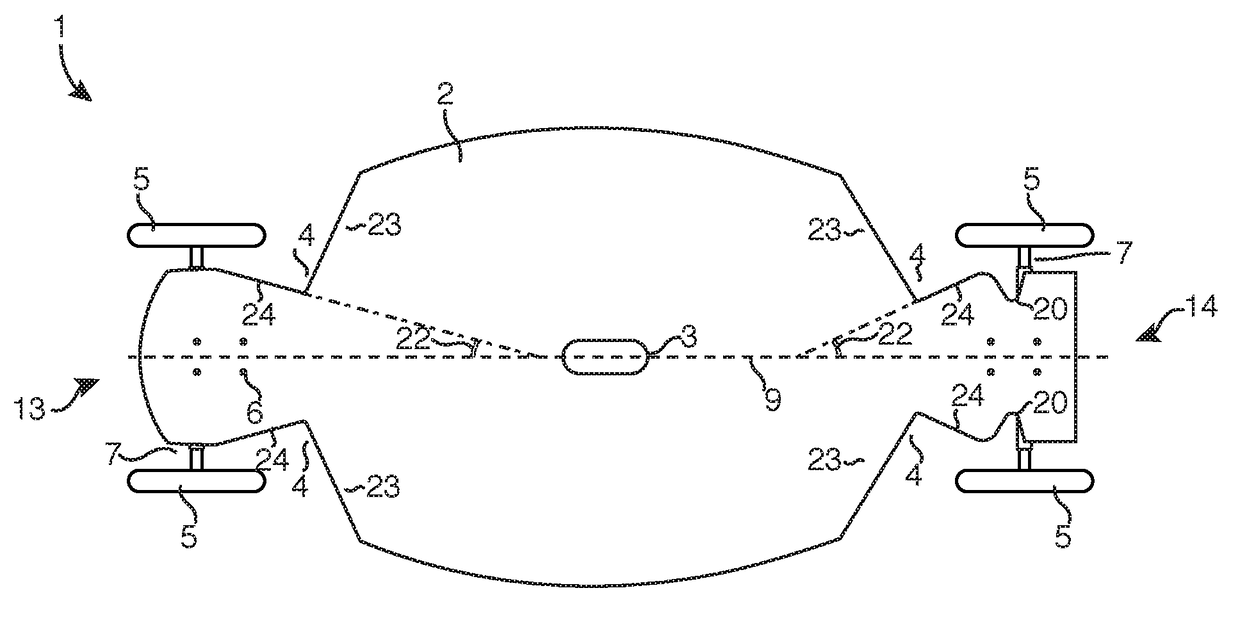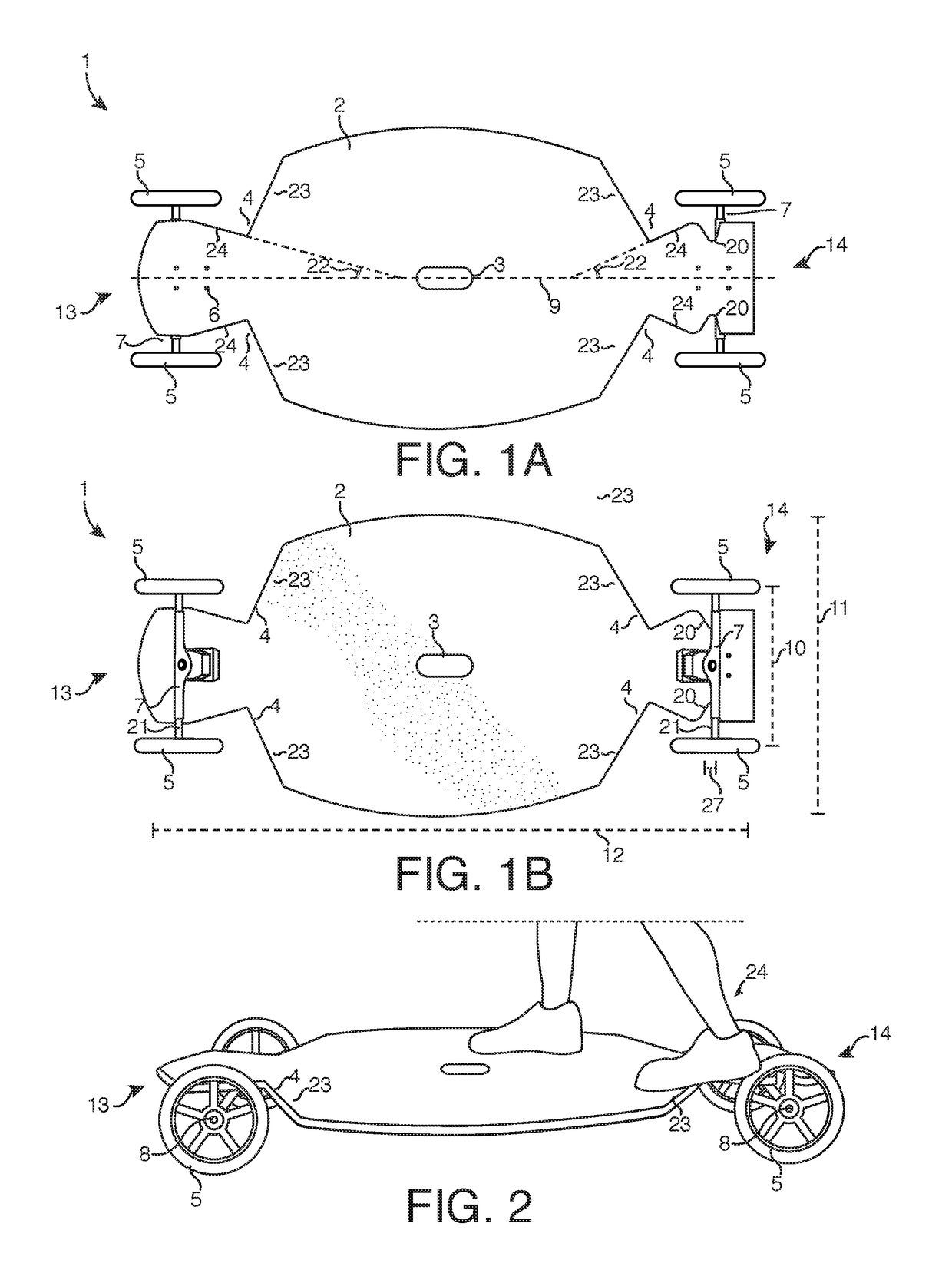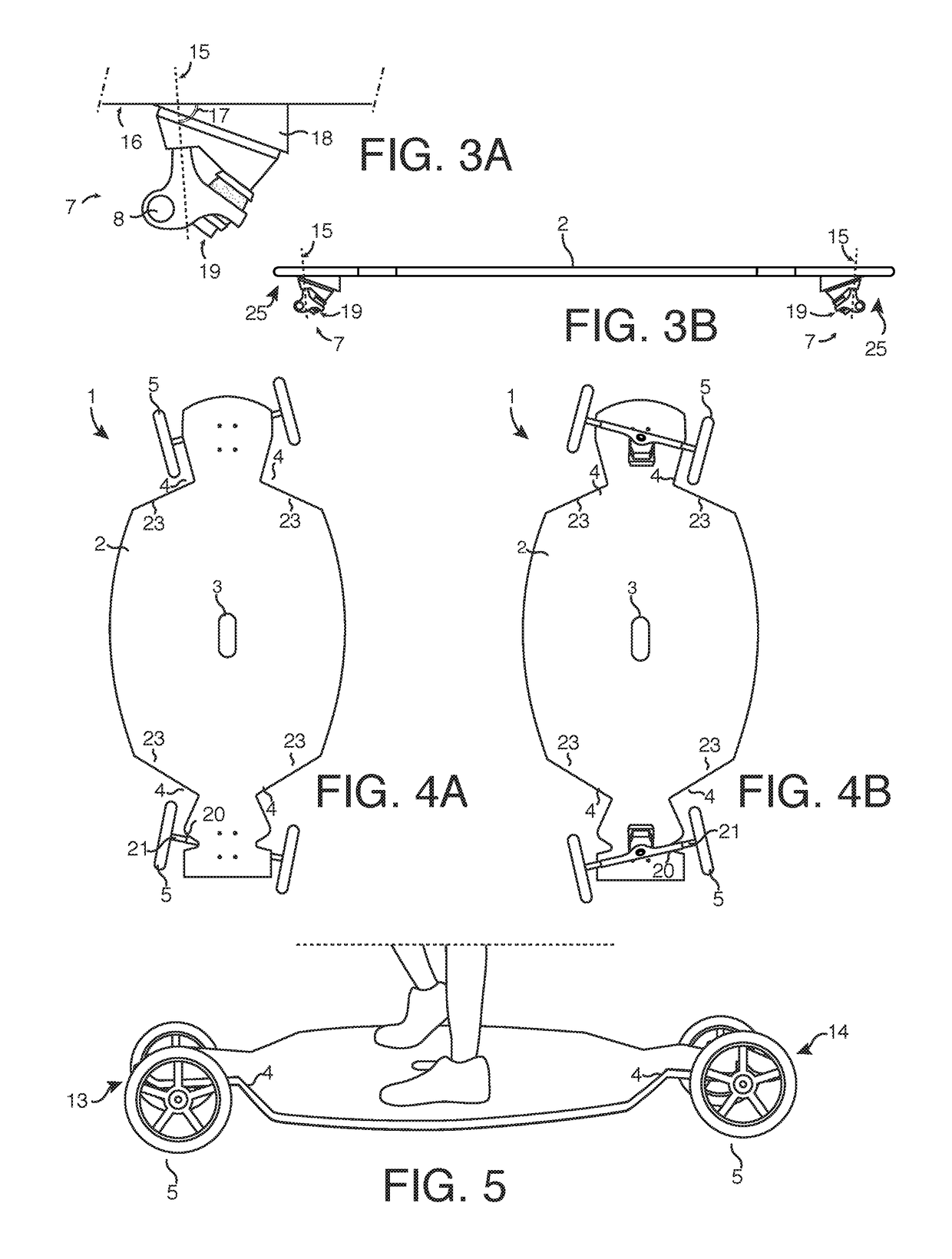Standup paddle-board skateboard apparatus
a technology for skateboards and skateboards, applied in the field of skateboards, can solve the problems of many problems surrounding skateboards mimicking the activity of standup paddle-boarding, fail to provide a similar experience, impractical solutions, etc., and achieve the effects of increasing or decreasing the speed of deceleration, increasing width, and slowing down the speed of travel
- Summary
- Abstract
- Description
- Claims
- Application Information
AI Technical Summary
Benefits of technology
Problems solved by technology
Method used
Image
Examples
Embodiment Construction
[0026]Referring to an exemplary embodiment shown in FIG. 1A and FIG. 1B, a standup paddle-board skateboard 1 includes a deck 2 with mounted truck assemblies 7. The truck assemblies 7 further comprise attached wheels 5. Fasteners 6 secure the truck assemblies 7 to the deck 2.
[0027]Referring to FIG. 3A, a skateboard truck assembly 7 is mounted on the lower planar surface 16 of a deck, such that the pivot-axis 15 forms a pivot-axis angle 17 that is between 55-degrees and 90-degrees from the plane of the deck. In certain embodiments this angle is established, for example, by mounting a wedge 18 between a skateboard truck assembly 7 and the lower surface 16 of the deck, such that the pivot-axis angle 17 is set to 55-degrees to 90-degrees. In certain embodiments, it is preferable to set a pivot-axis angle between 70-degrees and 80-degrees. For reference, a king-pin 19 is shown in FIG. 3A, and a wheel axle 8 is shown in FIG. 2 and FIG. 3A.
[0028]Referring to FIG. 3B, the skateboard truck as...
PUM
 Login to View More
Login to View More Abstract
Description
Claims
Application Information
 Login to View More
Login to View More - R&D
- Intellectual Property
- Life Sciences
- Materials
- Tech Scout
- Unparalleled Data Quality
- Higher Quality Content
- 60% Fewer Hallucinations
Browse by: Latest US Patents, China's latest patents, Technical Efficacy Thesaurus, Application Domain, Technology Topic, Popular Technical Reports.
© 2025 PatSnap. All rights reserved.Legal|Privacy policy|Modern Slavery Act Transparency Statement|Sitemap|About US| Contact US: help@patsnap.com



